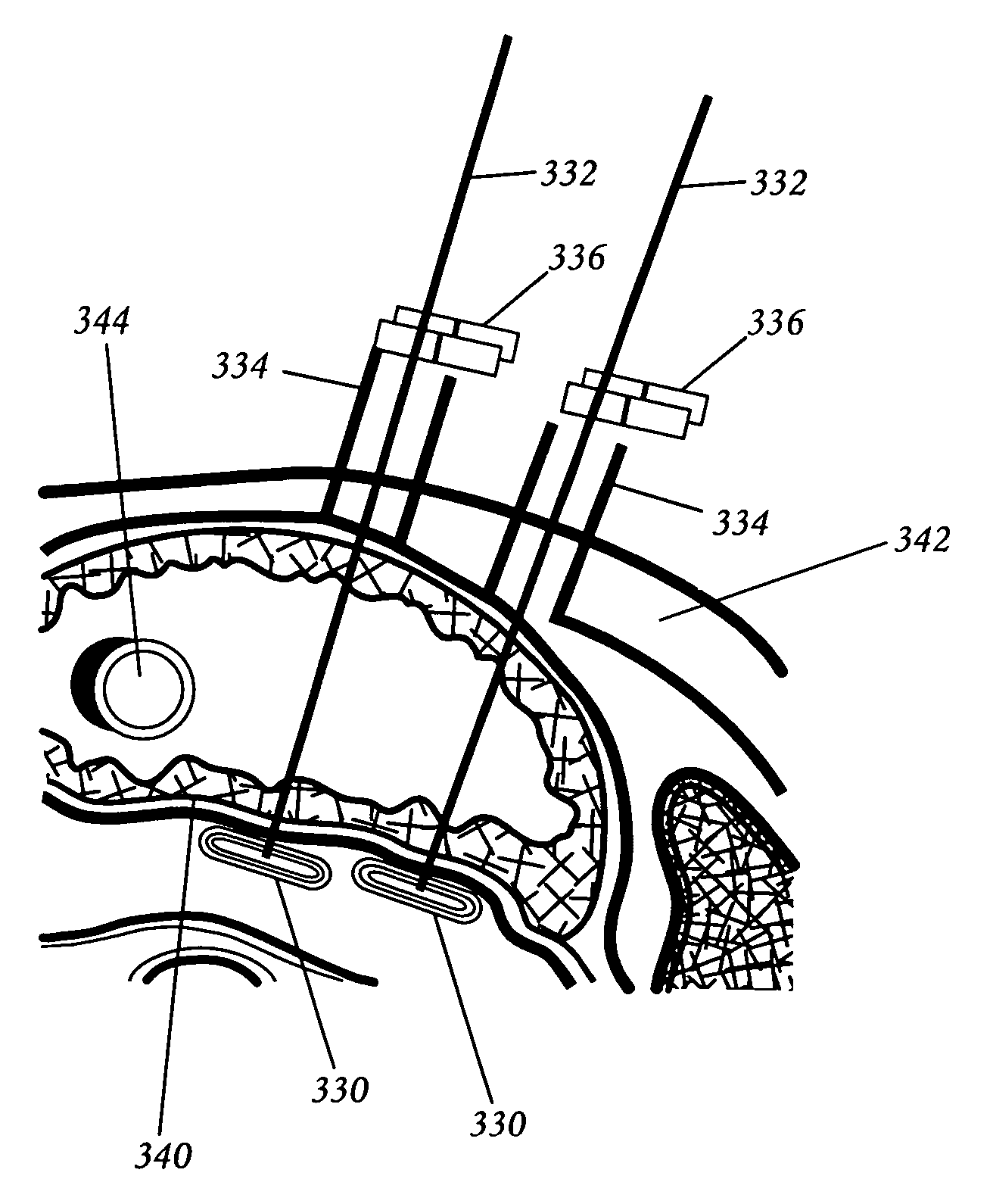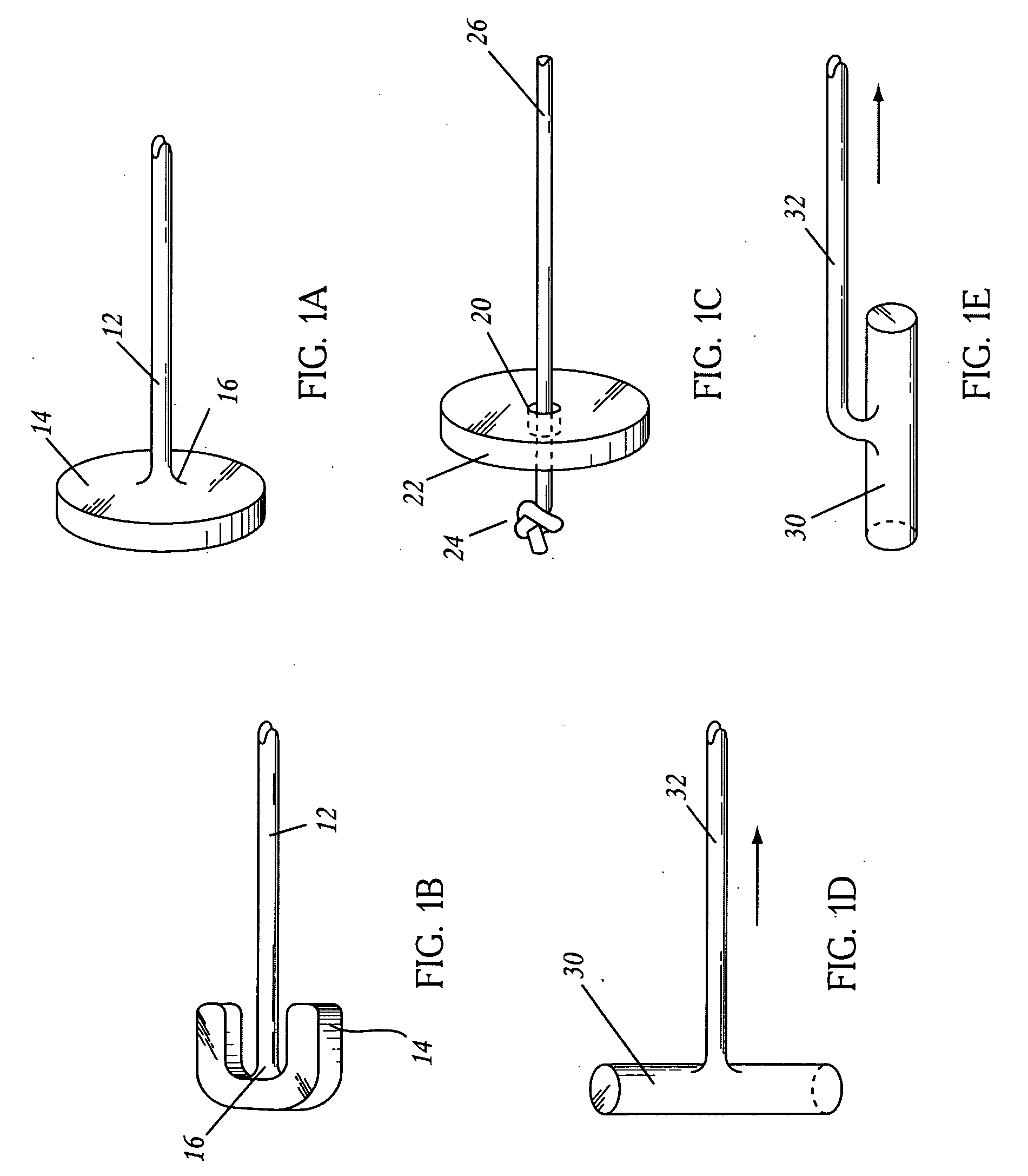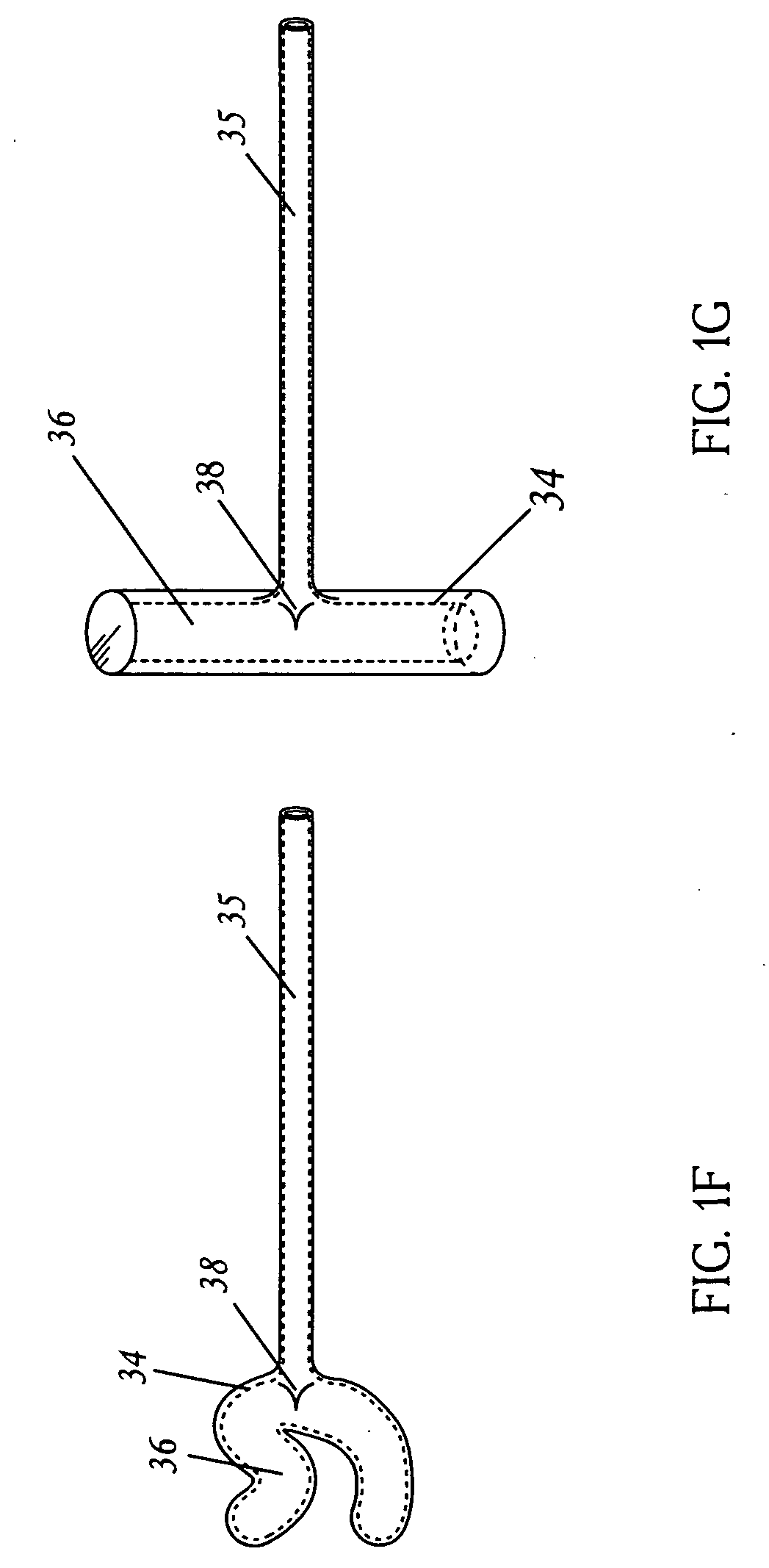[0017] One embodiment of the present invention is a method for reducing the interior volume of an organ comprising passing a first end of a first
surgical instrument through the patient's
skin, through a first exterior surface of the organ, through the interior of the organ, and then through a second exterior surface of the organ, so that the
surgical instrument traverses the organ, deploying a first anchor from the
surgical instrument wherein the first anchor is located adjacent to the second exterior surface of the organ, partially or completely withdrawing the surgical instrument, deploying a second anchor wherein the second anchor is located adjacent to the first exterior surface of the organ, providing a connector between the first and second anchors, wherein the length of the connector between the first and second anchors is such that the first and second anchors urge the first and second exterior surfaces of the organ toward each other, thereby reducing the volume of the organ. In some embodiments, the first and second anchors are deployed from the same surgical instrument. Another aspect of the invention is a method of reversing the volume reducing procedure by
cutting or otherwise dividing the one or more connectors between the first and second anchors. In another embodiment of the method, the organ is a gastrointestinal organ. The method may further comprise creating a space outside the organ adjacent to the second exterior surface thereof by introducing a volume-filling substance into a
potential space adjoining the second exterior surface. The
potential space can be expanded by the injection of a gas, liquid, gel, foam, or
solid, into the
potential space, by the inflation of a
balloon placed in the potential space, or by
blunt dissection. The method may further comprise insufflating the organ prior to the passing of the first end of a surgical instrument through a first exterior surface of the organ. In some embodiments, the patient's
skin is overlying the patient's stomach, the organ is the patient's stomach, the first exterior surface is the
anterior wall of the stomach, the second exterior surface is the
posterior wall of the stomach, and the potential space is the lesser sac of the
peritoneum. The method may further comprise urging the anterior and posterior walls of the stomach closer together by shortening the length of the connector between the first and the second anchors. In some embodiments, the surgical instrument is inserted into the patient's
abdomen by directly penetrating the patient's
skin and
abdominal wall, by passing the surgical instrument through a
laparoscopic port, or by passing the surgical instrument through an incision in the patient's skin and
abdominal wall.
[0019] Another embodiment of the invention is a fastening
assembly, comprising a first anchor, a second anchor, and a connector, wherein the first anchor comprises a relatively planar body attached to the connector, the body of the first anchor having a relatively planar deployed profile and a reduced profile configuration, wherein the second anchor comprises a relatively planar body, a hole or other passageway approximately in the center of the body of sufficient
diameter to allow passage of the connector through the hole or other passageway, one, two or more gripping elements projecting into the hole or other passageway, and one, two or more attachment structures accessible from a top surface of the body, the body of the second anchor having a relatively planar deployed profile and a reduced profile configuration, and wherein the gripping elements prevent movement of the second anchor along the longitudinal axis of the connector in the direction away from the first anchor when the connector is disposed in the hole or other passageway when the second anchor is in its deployed configuration.
 Login to View More
Login to View More  Login to View More
Login to View More 


